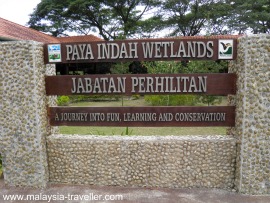
Having just gone back there (June 2011) I am pleased to report that there has been significant improvement.

The excavations left by the mining works have been converted into lakes which are now home to fish, lotus plants and water lilies and some more exotic species, namely crocodiles and hippos.
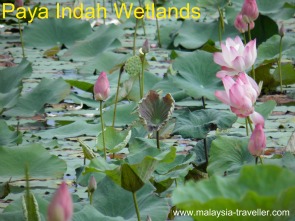
The Department of Wildlife & National Parks has done a good job over the past year in regenerating this eco-tourism park's facilities which had earlier seemed to be unutilised.
They have also recently built a lookout tower providing a 360 degree view of the whole area. It is still very green but I noted that dredging activity is going on just outside the park boundary and that patches of trees have been cleared for agricultural or development purposes near the park.
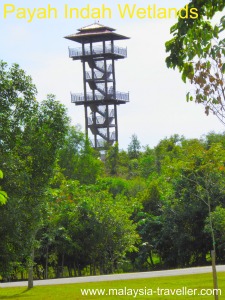
Bird Watching
The park is open for bird watching from 7:30am to 7pm. There is no charge (admission to Paya Indah is free) but bring your own binoculars. The types of birds which have been spotted here are:
- purple swamp hen
- white breasted water hen
- olive backed sunbird
- brown shrike
- red wattled lapwing
- Swinhoe's snipe
- yellow vented bulbul
- peacock
Jungle Trekking
The Typha Trail is available for trekking. Much of the woodland in the recreational zone has been recently planted so do not expect the same sort of lush jungle that you encounter in other parks in Malaysia.
Cycling
I was pleased to see on my last visit that bicycles are available again. They look in good condition and can be rented for RM5 for 2 hours. Tricycles are provided for children under 6 years old at RM3 for 2 hours.
This is a spread out (and flat) park so a bicycle is a good way of covering the distances. Take a hat and water though because there are a lot of open exposed spaces.
Hippo Feeding
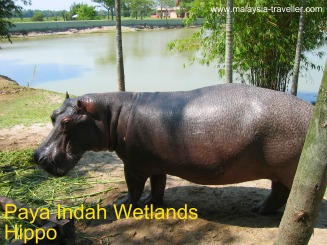
Crocodile Feeding

The massive fierce-looking crocodiles were apparently transported to Paya Indah from Langkawi which puts me off exploring the wilds of Langkawi a little bit.
Fishing
Fishing is possible on Typha Lake from 8am - 6:30pm everyday except Fridays. The cost is RM10 per rod. No live bait is allowed.
Fishermen tell me that Marble Goby and Giant Snakehead are typical of the type of fish which inhabit this pool.
Kayaking
Kayak rental costs RM7 per hour. An instructor can be hired for groups of between 10 to 20 people at RM180 for 3 hours (prior reservation is needed).
The hours for kayaking are 9am - 12pm, 3pm - 6pm.
FACILITIES
On my first visit to Paya Indah the accommodation was not in use but now it is available for those wishing to stay overnight.
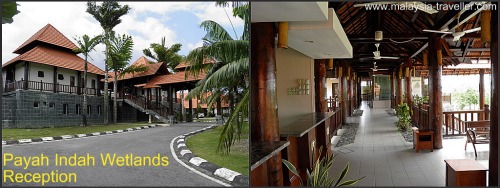
And very nice they look too and good value at the very reasonable price of RM120 per night.
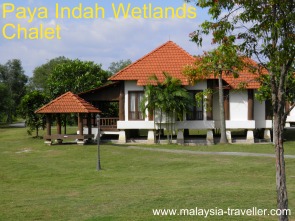
For more information and bookings contact
Paya Indah Wetlands
Jabatan Perhilitan
Km 4, Jalan Dengkil - Banting
43800 Dengkil
Selangor Darul Ehsan
Malaysia
Tel: +603-87687616
Fax: +603-87688424
Email: piw@wildlife.gov.my

No comments:
Post a Comment